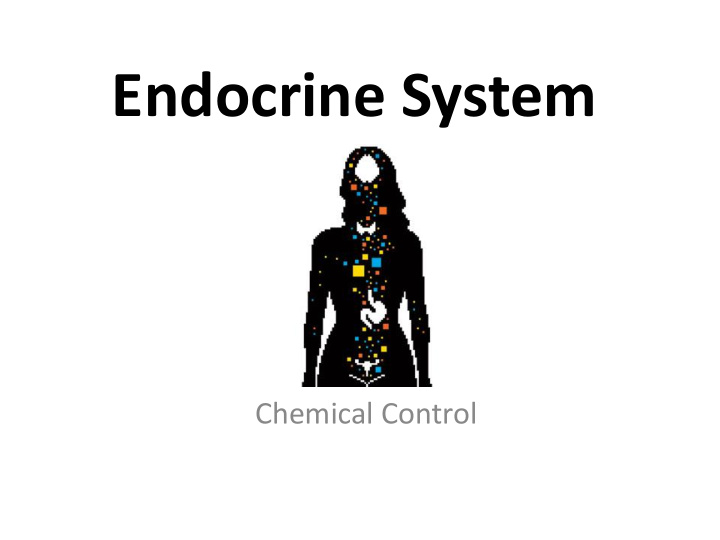



Endocrine System Chemical Control
Endocrine System • A system of glands that release chemical messengers ( hormones ) to coordinate body functions • 10 major endocrine glands • Hormones are necessary for cell communication and coordination of cell processes
Chemical Messengers
Function of the Endocrine System • Regulates the growth, metabolism, development and overall function of the human body • Works closely with the nervous system to maintain homeostasis through feedback mechanisms
Hormones • Chemical messengers that are transported by the circulatory system (blood) • Produced and secreted by endocrine glands • Target a variety of cells to have multiple effects ( target cells ) • Long distance signaling
Hormones
Hormone Classification • Classified based on their solubility and chemical structure Hormones Lipid Water Soluble Soluble Proteins and Steroids Amines Peptides
Peptides Proteins Amines Steroids
Water Soluble Hormones (Peptides, Proteins, Amines) • Target a receptor on the cell surface • Initiates a signal transduction pathway that may involve a second messenger (cAMP) • Fast acting hormones
Lipid Soluble Hormones (Steroids) • Diffuse through plasma membrane • Binds to a receptor in cytoplasm or nucleus • Hormone-receptor complex acts as a transcription factor that then regulates gene expression • Slower response because of the regulation of gene activity
Significant Endocrine Glands
Significant Endocrine Glands 1. Hypothalamus: Connects nervous system to endocrine system, receives information and sends out nervous or endocrine signals, controls the pituitary gland 2. Pituitary Gland: Composed of nervous and endocrine tissue, “master gland”, releases 9 different hormones
Hypothalamus
Pituitary Gland
Feedback Mechanisms
Feedback Mechanism • Self-regulating mechanism that increases or decreases the level of a particular substance 1. Positive Feedback: Enhances an already existing response 2. Negative Feedback: Maintains homeostasis, common in the endocrine system
Positive Feedback Example
Negative Feedback Examples • Blood glucose levels – insulin and glucagon • Blood volume (water) – anti-diuretic hormone (ADH)
Blood Glucose Levels: Controlled by the action of insulin and glucagon
Kidney Structure
Melatonin • Controls rhythmic activities, such as sleep/wake cycles
Growth Hormone • Controls growth and other metabolic functions by stimulating protein synthesis
Epinephrine (Adrenaline) • Responding to stress or emergencies
Crash Course: Endocrine System Hormonal Communication
Recommend
More recommend